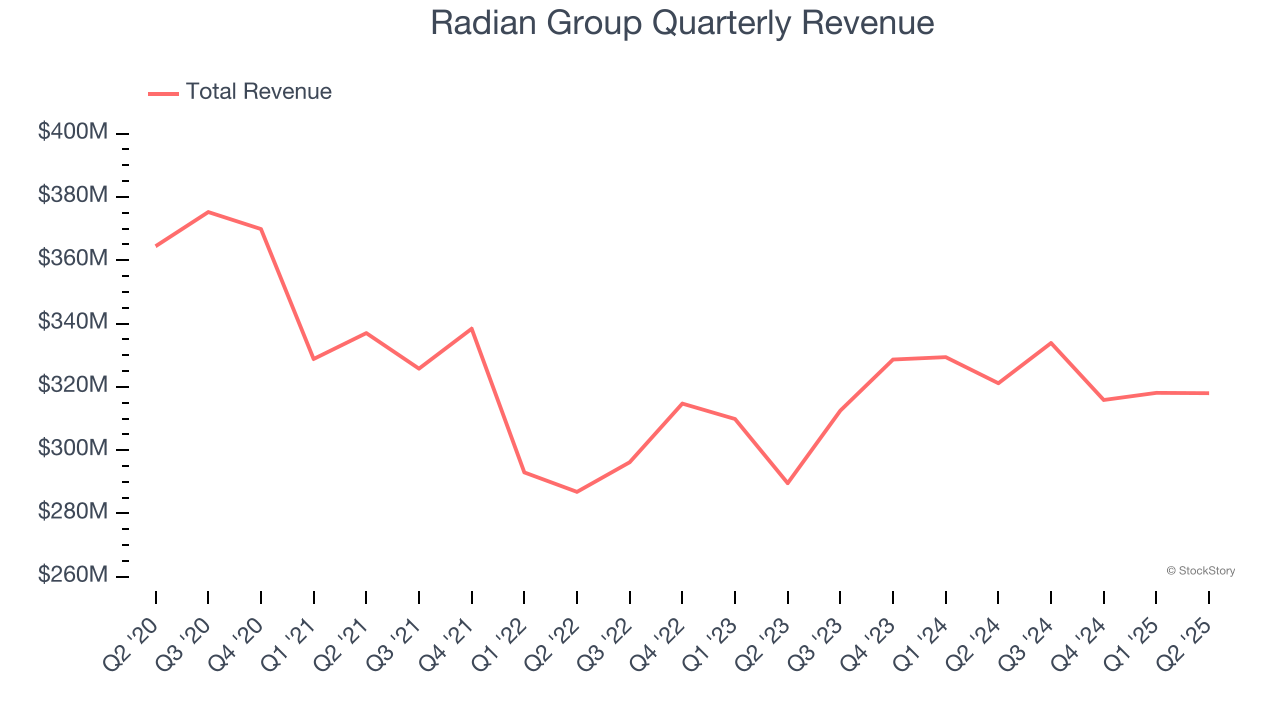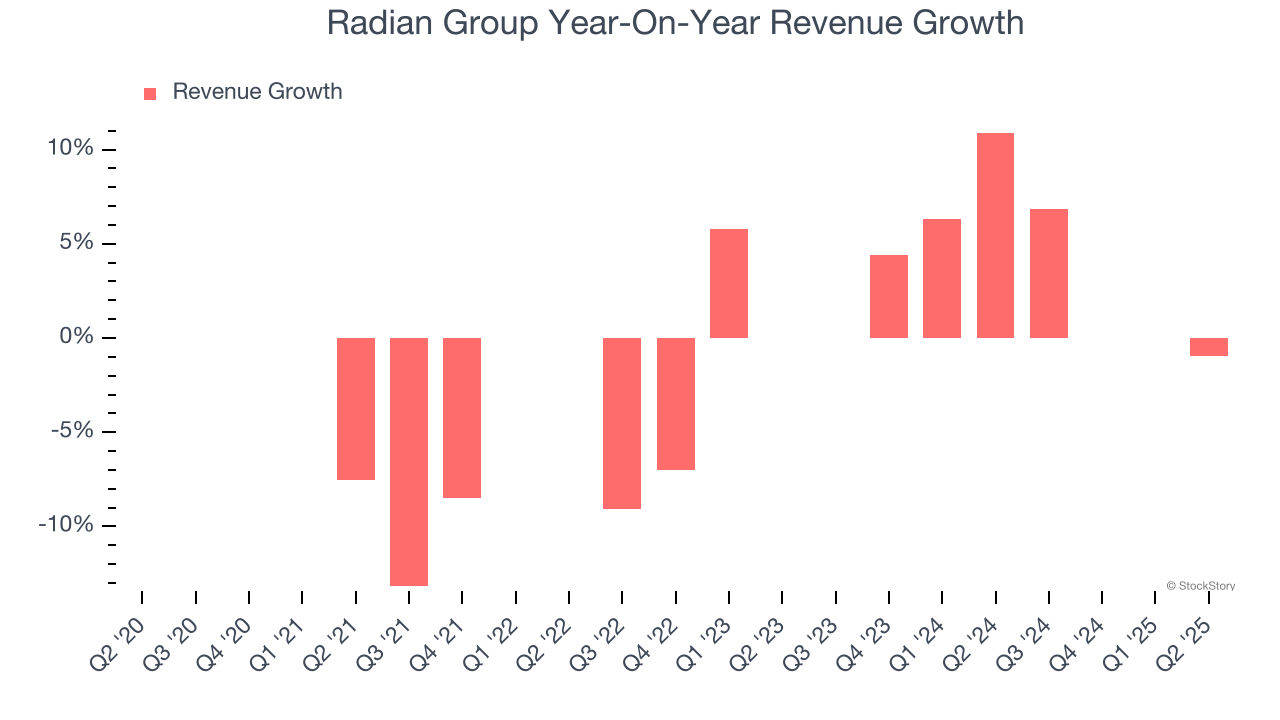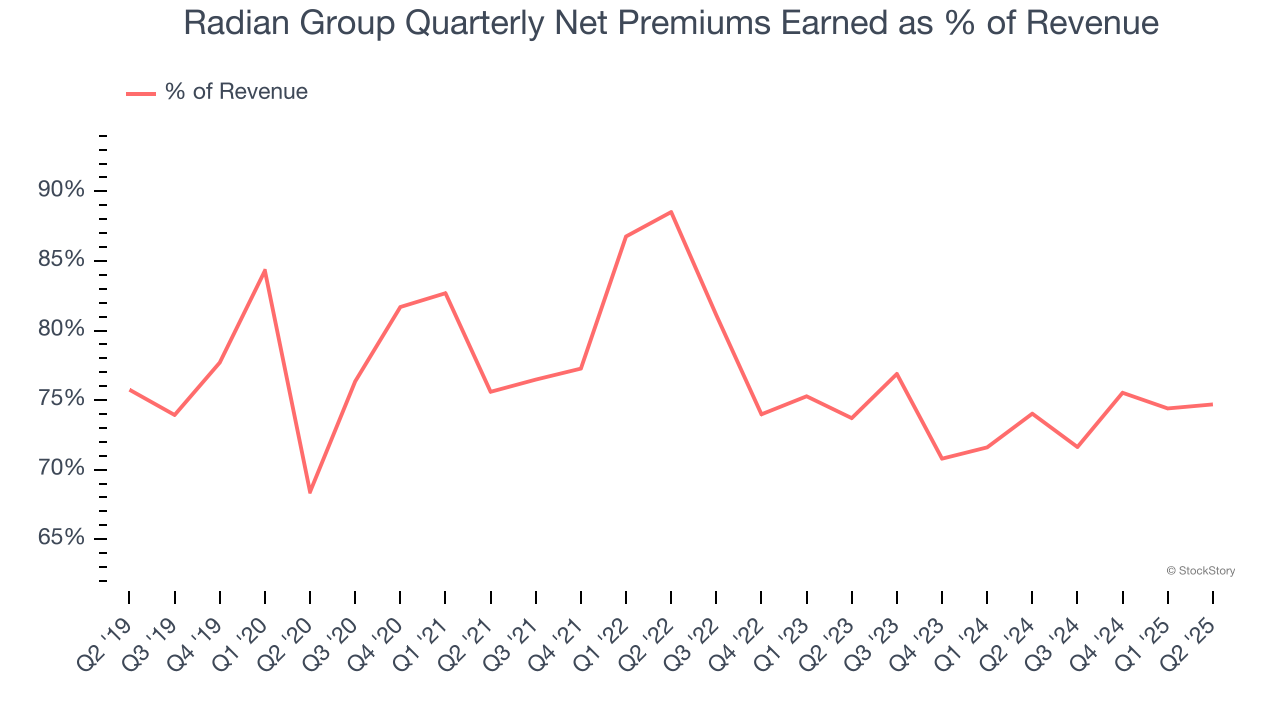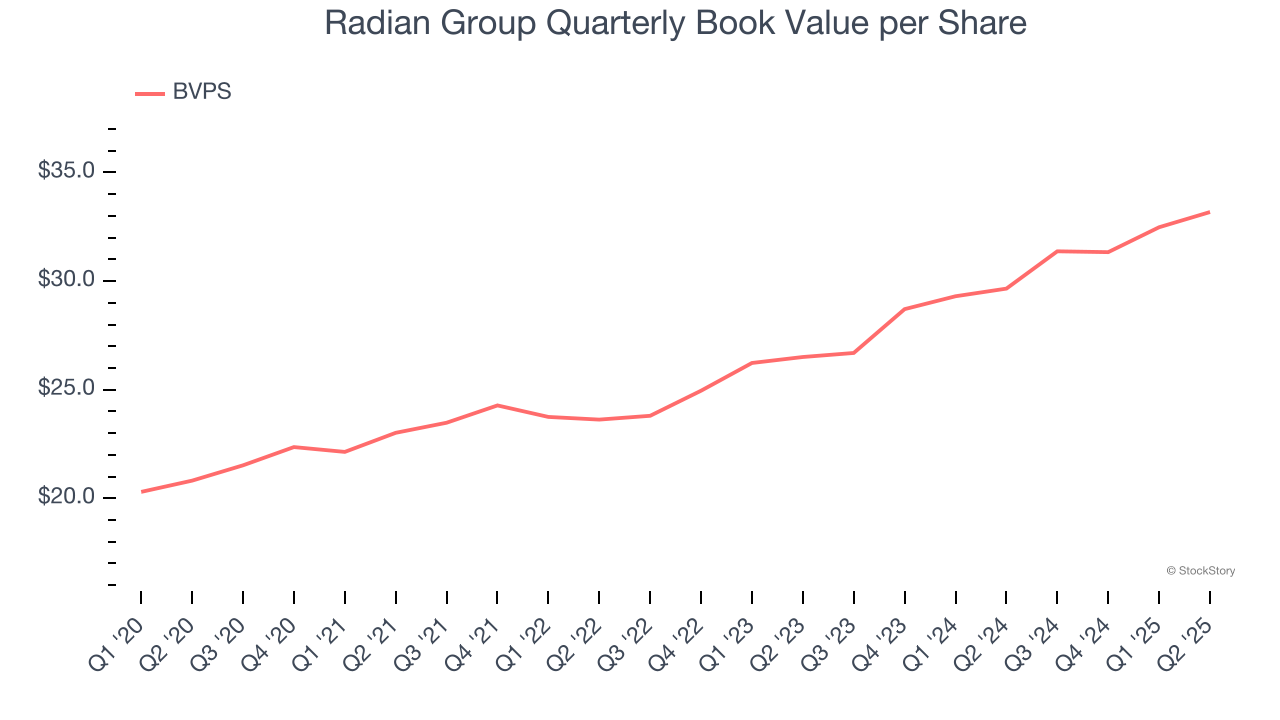
Mortgage insurance provider Radian Group (NYSE: RDN) fell short of the market’s revenue expectations in Q2 CY2025, with sales flat year on year at $318 million. Its non-GAAP profit of $1.01 per share was 3.6% above analysts’ consensus estimates.
Is now the time to buy Radian Group? Find out by accessing our full research report, it’s free.
Radian Group (RDN) Q2 CY2025 Highlights:
- Net Premiums Earned: $237.5 million (flat year on year)
- Revenue: $318 million vs analyst estimates of $324.2 million (flat year on year, 1.9% miss)
- Pre-Tax Profit Margin: 55% (3.5 percentage point year-on-year decrease)
- Adjusted EPS: $1.01 vs analyst estimates of $0.98 (3.6% beat)
- Market Capitalization: $4.56 billion
“We reported strong performance for Radian in the second quarter, increasing book value per share by 12% year-over-year, generating net income of $142 million and delivering a return on equity of 12.5%. Our primary mortgage insurance in force, a key driver of future earnings for our company, grew to another all-time high of $277 billion,” said Radian’s Chief Executive Officer Rick Thornberry.
Company Overview
Founded during the housing boom of 1977 and weathering multiple real estate cycles since, Radian Group (NYSE: RDN) provides mortgage insurance and real estate services, helping lenders manage risk and homebuyers achieve affordable homeownership.
Revenue Growth
Insurers earn revenue three ways. The core insurance business itself, often called underwriting and represented in the income statement as premiums earned, is one way. Investment income from investing the “float” (premiums collected upfront not yet paid out as claims) in assets such as fixed-income assets and equities is the second way. Fees from various sources such as policy administration, annuities, or other value-added services is the third.
Over the last five years, Radian Group’s demand was weak and its revenue declined by 2.5% per year. This wasn’t a great result and suggests it’s a low quality business.

We at StockStory place the most emphasis on long-term growth, but within financials, a half-decade historical view may miss recent interest rate changes, market returns, and industry trends. Radian Group’s annualized revenue growth of 3.1% over the last two years is above its five-year trend, but we were still disappointed by the results.  Note: Quarters not shown were determined to be outliers, impacted by outsized investment gains/losses that are not indicative of the recurring fundamentals of the business.
Note: Quarters not shown were determined to be outliers, impacted by outsized investment gains/losses that are not indicative of the recurring fundamentals of the business.
This quarter, Radian Group missed Wall Street’s estimates and reported a rather uninspiring 1% year-on-year revenue decline, generating $318 million of revenue.
Net premiums earned made up 76.9% of the company’s total revenue during the last five years, meaning insurance operations are Radian Group’s largest source of revenue.

While insurers generate revenue from multiple sources, investors view net premiums earned as the cornerstone - its direct link to core operations stands in sharp contrast to the unpredictability of investment returns and fees.
Here at StockStory, we certainly understand the potential of thematic investing. Diverse winners from Microsoft (MSFT) to Alphabet (GOOG), Coca-Cola (KO) to Monster Beverage (MNST) could all have been identified as promising growth stories with a megatrend driving the growth. So, in that spirit, we’ve identified a relatively under-the-radar profitable growth stock benefiting from the rise of AI, available to you FREE via this link.
Book Value Per Share (BVPS)
Insurance companies are balance sheet businesses, collecting premiums upfront and paying out claims over time. The float–premiums collected but not yet paid out–are invested, creating an asset base supported by a liability structure. Book value per share (BVPS) captures this dynamic by measuring these assets (investment portfolio, cash, reinsurance recoverables) less liabilities (claim reserves, debt, future policy benefits). BVPS is essentially the residual value for shareholders.
We therefore consider BVPS very important to track for insurers and a metric that sheds light on business quality. While other (and more commonly known) per-share metrics like EPS can sometimes be lumpy due to reserve releases or one-time items and can be managed or skewed while still following accounting rules, BVPS reflects long-term capital growth and is harder to manipulate.
Radian Group’s BVPS grew at a solid 9.8% annual clip over the last five years. BVPS growth has also accelerated recently, growing by 11.9% annually over the last two years from $26.51 to $33.18 per share.

Key Takeaways from Radian Group’s Q2 Results
Radian's revenue missed and its net premiums earned fell slightly short of Wall Street’s estimates, which wasn't a good start. On the other hand, EPS beat. Overall, this was a mixed quarter. The stock remained flat at $33.51 immediately after reporting.
Radian Group’s latest earnings report disappointed. One quarter doesn’t define a company’s quality, so let’s explore whether the stock is a buy at the current price. We think that the latest quarter is only one piece of the longer-term business quality puzzle. Quality, when combined with valuation, can help determine if the stock is a buy. We cover that in our actionable full research report which you can read here, it’s free.






